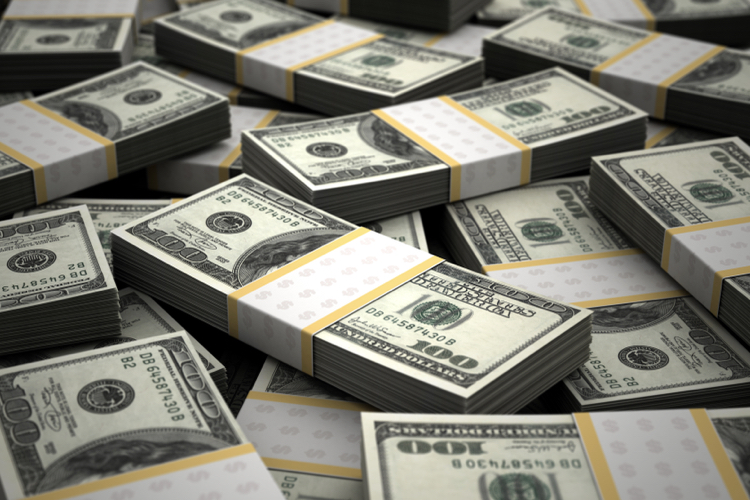
Those in power fear those who pose a legitimate threat to their reign.
This is the reason the globalist cabal desperately wants to decimate the middle class and make America (and the world) a society of extremes: Extreme poverty (us) on the one hand, and extreme wealth (them) on the other. Never forget the World Economic Forum’s warning that “You will own nothing and be happy.”
Notice that the WEF did not say “we will own nothing.” Rather, they said “you,” directed at us. They, the “elites,” will still own things. In fact, they will own everything (in contrast to us owning nothing) and then rent it out to all of us, further enriching them.
The globalists understand that the poor are easier to control. Obviously, men who are completely dependent for their subsistence on others are not truly free, for they are always at the mercy of their overlords. They cannot rebel because they cannot afford to, lest they be cut off from their homes and livelihoods.
Remember, the United States did not spring out of a Marxist revolution, as left-wing historical revisionists would like us to believe; it was led by property-owning gentry. The great leaders of the War for Independence — Washington, Jefferson, and the like — were wealthy men of independent means whose station in life afforded them the time, education, preparation, and resources to devote to the cause of freedom, rather than having to be stuck on the farm or in a workshop cranking out a meager subsistence.
Throughout history, the real threat to the rich and powerful has always come from those who were similarly rich and powerful — possessing slightly less than the rulers, but being able to make up for it with united numbers.
For instance, for much of European history, what restrained the power of the kings was the nobility, as the nobles owned land and had their own armies. It was a group of rebel barons who forced England’s King John to sign the Magna Carta.
In the same way, in some European societies, particularly in the cities (which, unlike the countryside, were not stratified into the two extremes of lords and serfs under feudalism, and thus were able to develop a middle class), the middle class was the force directly below the aristocracy and was most able to challenge the power of the aristocrats through united effort.
In the cities, the middle class generally consisted of skilled professionals who banded together to form guilds in order to collectively counteract the power of the aristocracy. There are two important lessons here:
First, that developing valuable skills is what allowed the guildsmen to gain some measure of power and influence, which the serfs in agricultural areas lacked.
Second, that there is power in numbers, for while the members of the middle class might not have been as influential or powerful individually as any one aristocrat, there were more of them, so they could challenge the upper class by banding together.
Donald Weinstein’s Savonarola: The Rise and Fall of a Renaissance Prophet, which I have quoted elsewhere, provides key insight into this tug of war between the aristocrats and the middle class in the Medieval Italian city-state of Florence:
Inevitably, Florence’s economic and territorial expansion had profound effects upon its political life. Wealthy bankers and international merchants had been merging with old landowning grandi families to form a new elite, which by the thirteenth century seemed to threaten the more egalitarian ways of the old commune. Increasingly referred to as ottimati, they were energetically and, to a considerable degree, successfully opposed by the master craftsmen, skilled artisans, lawyers, and notaries who made up the middle socioeconomic levels of society and identified themselves as il popolo, or popolano, exercising their influence through their [guild] organizations.
Eventually, the middle class gained a temporary victory by creating a system of government that barred members of the aristocracy (and members of the lower classes) from holding public office, requiring that public officials be members of one of the middle-class guild organizations.
After a series of tumultuous uprisings by the working class (which were impelled by Millenarian apocalyptic religious fervor), the wealthy elites took over the political life of the city, albeit maintaining the guise of the middle-class, republican system.
Sound familiar? The globalist oligarchs of today likewise foment revolution and unrest among the poor, calling for social change, expensive big government, and the erosion of property rights — all in the name of “democracy.” They promise the poor that the working people will be put in charge, but at the end of the day, it is really the elites who are in full power once the middle class has been gutted. And when the republic is dead, it is not democracy, but oligarchy that remains.
In closing, we cannot preserve the American Republic without preserving America’s middle class. To do this, we must promote policies that allow the middle class to flourish, and hefty taxes such as the property tax, income tax, and estate tax must be eliminated.
Shop For Night Vision | See more…
Shop For Survival Gear | See more…
-
Sale!

Quick Slow Release Paramedic Survival Emergency Tourniquet Buckle
Original price was: $14.99.$7.99Current price is: $7.99. Add to cart -
Sale!

Mesh Shooting Hunting Vest with Multi Pockets
Original price was: $59.99.$39.99Current price is: $39.99. Add to cart -
Sale!

Portable Mini Water Filter Straw Survival Water Purifier
Original price was: $29.99.$14.99Current price is: $14.99. Add to cart


















































